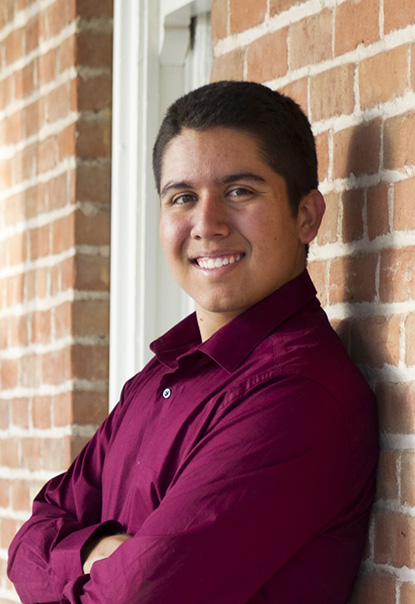Alec Calac

Power Words
Tribal Name
Pauma Band of Luiseño Indians
Where were you born?
San Diego, CA
What school did you attend?
University of Arizona, B.S. – Neuroscience & Cognitive Science, Molecular & Cellular Biology
What gained you interest in the NIH?
Dr. Sharon Milgram, Director of the NIH Office of Intramural Training and Education, encouraged me to apply to the NIH Summer Internship Program. I was a three-time participant in the National Institute of Neurological Disorders and Stroke (NINDS) Summer Program in the Neurological Sciences from 2013-2015.
How can you help improve the composition of the STEM education pipeline for Native American students?
Throughout college, I was supported by the California – Native American Research Centers for Health (CA-NARCH); a partnership of organizations and academic institutions working to increase the number of American Indian/Alaska Native (AI/AN) scientists and health professionals. At the NIH, I regularly address the Tribal Advisory Committee on the importance of the STEM education pipeline for Native American students and the strides that programs like CA-NARCH have made in Indian Country. Taking these experiences back home, I have shared my story with students from Pauma and other Tribal communities at the Dream the Impossible Native Youth Conference in San Diego, CA. Motivating and inspiring the next generation to pursue higher education is paramount to engaging Native American youth in STEM.
What is your most important accomplishment to date?
The University of Arizona and Society for Advancement of Chicanos/Hispanics and Native Americans in Science (SACNAS) fostered my passion for outreach. After graduating from the University of Arizona I was appointed to the inaugural Tribal Youth Health Advisory Board (TYHAB), an initiative of the National Indian Health Board. As a Tribal Youth Health Policy Fellow, I have excitedly turned my passion for outreach into a national advocacy platform. The TYHAB is comprised of 2 Native American youth from each of the 12 regions of Indian Country, and our top priorities are Tribal food sovereignty and substance abuse prevention in AI/AN youth.
How did you choose your career?
In 2016, I started a two-year NIH Postbaccalaureate Intramural Research Training Award (IRTA) program with the NINDS. Realizing that the pursuit of knowledge knows no end, I was enthralled by the work I was doing at the bench. Over time, the NIH incorporated science into my long-held aspiration for a career in medicine (tengalish), leading me to apply to NIH Medical Scientist Training Programs.
What types of community programs do you feel need to be more visible in Indian Country?
I believe that youth empowerment and cultural enrichment programs should be more visible throughout Indian Country. Elevating the visibility of programs in Indian Country promotes youth engagement and facilitates discussion of sensitive subjects amongst peers. Native American youth represent the future of Indian Country, and these programs are tailored to steer them away from behaviors that are detrimental to their well-being. When considering issues such as youth suicide and substance abuse, community programs should be proactive, not reactive – empowering the next generation of Native American leaders.
What are ways to provide better STEM education for Native American students?
There is often hesitation to pursue an education in STEM. The reasons vary from time to degree completion or lack of preparedness for the curriculum. There are a number of summer STEM programs tailored toward Native American students. However, students may have to travel across state lines spending several weeks away from home. To better STEM education, the capacity of tribes to support and educate their own students should be increased.
What does success mean to you?
I do not mark success by achievement, but by growth. Success is a two-way street marked with a number of rest stops. You can go forward. You can go backward. You can pause. Failure is not a roadblock to success.




